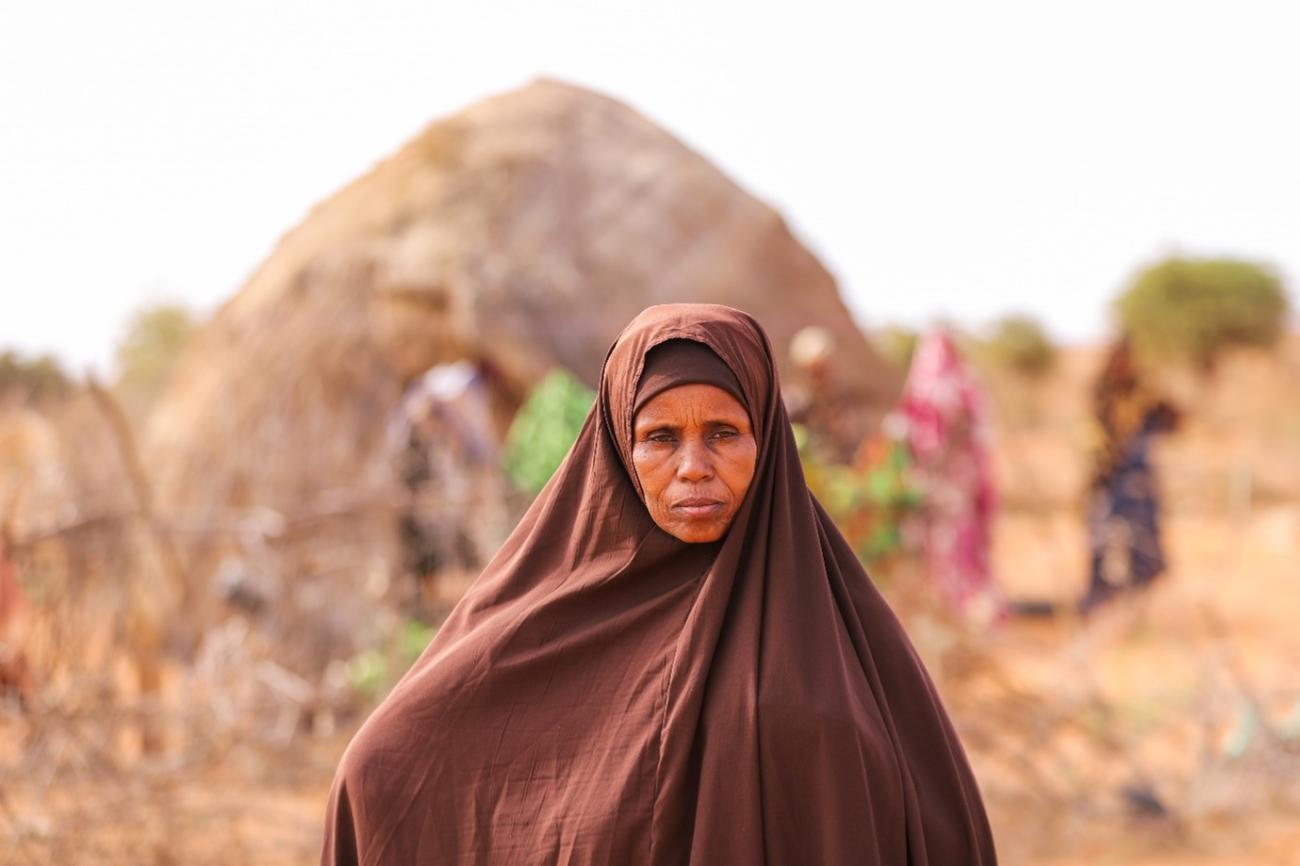In Ethiopia’s drought prone regions, early action is saving lives and building resilient future

Early warnings and cash support help communities in Ethiopia safeguard their livelihoods.
It is a sunny morning in Dollow village, community members file into the townhall, where local authorities, regional disaster risk management Bureau and WFP staff are waiting to speak with them. small town in Ethiopia’s Somali region, a region still recovering from the 2020-2022 drought—the worst in the Horn of Africa's recent history.
This is a critical meeting where early warning messages are delivered to local communities. The message for this session: there will be below normal rains in this season, protect your livestock and livelihoods, stock up on food and fodder, and prepare for what is to come.
Habiba Abdulahi joins her neighbours to listen to the early warning messages. “In the meeting, we heard that the rain may not come,” says Habiba. “We knew they were right because there is no moisture in the air.” She recalls the previous droughts where communities endured extreme hardships and lost their livestock and means of livelihoods. “In the sessions, we learned how to save feed for our animals and food for our families. We cannot fight nature, but we can be prepared and protect ourselves,” she adds.
In Ethiopia, an estimated 19 million people that live in areas at risk of drought. Extreme droughts lead to failure of livestock production, water shortages and prolonged periods of food insecurity. As a result, people, livelihoods and food systems are left vulnerable as local coping strategies often break down, ultimately deteriorating the resilience of households.
The community early warning meetings are part of WFP’s anticipatory action programme. To respond to the forecasts of a La Niña induced drought will hit the Somali and Oromia regions in the last quarter of 2024, WFP with the leadership of the Somali Disaster Risk Management Bureau (DRMB), activated Anticipatory Actions (AA). These actions leverage advanced forecasting and early warning systems to enable communities to take precautionary measures to safeguard their lives and livelihoods.
WFP’s anticipatory actions are activated through early warning messages and advisories; distribution of multi-purpose cash transfers; rangeland management, fodder production and provision of feed vouchers for animals. WFP targeted close to 1 million people in drought-risk Oromia and Somali regions with early warning messages, 70,000 with cash assistance, and 96,000 with livestock feed vouchers.
Alongside early warning messages, WFP provides multipurpose cash transfers to vulnerable communities ahead of the forecasted drought to help communities have access to food and essential needs. Communities in the targeted districts received USD 228.3 over three months (USD 76.1 per month), which translates to approximately ETB 7,700 per household per month.
For Habiba, this cash transfer came at the right time. “I can now think about how to store fodder for my three goats and buy pasta and macaroni to store for later.” The 46-year-old mother of ten is the primary breadwinner for her household, as her husband is not employed. Distribution of multipurpose cash empowers communities to make decisions for themselves and their families' well-being.
As forecasted, the November-December rains were below average in Habiba’s village. Sitting in the backyard of her family home with her children, she reflects on how her family was able to cope in those times. “We cannot fight nature, but we were prepared to protect our families and livestock from the drought,” says Habiba. “I used the cash to pay back some of the debt my family owed. With the remaining money, I set up a small business selling food and tea during market days. Now, I look back and think, if we didn’t have this support, surely, we wouldn’t have survived these past months.”
As Ethiopia continues to grapple with the challenges posed by climate extremes, Anticipatory Action allows governments, communities, and families to take proactive measures in safeguarding the lives and livelihoods of the most vulnerable face of uncertainty.


